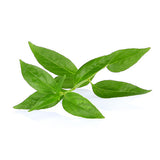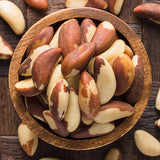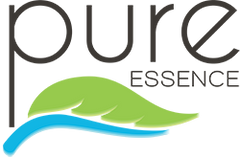You undoubtedly know that your immune system protects you against disease causing germs, like bacteria, viruses, parasites, allergens, etc. But did you know that there are two major parts to your immune system? Immunity can be broken down into “Innate Immunity” and “Adaptive Immunity.”
Innate Immunity is the basic defense system that you were born with and the first line of defense your body has. It cannot distinguish between specific pathogens but attacks any invader with special cells called “leukocytes” and “phagocytes”. When your Innate Immune system can’t completely overcome an infection, “Adaptive Immunity” comes into play.
Adaptive Immunity is an advanced system designed to attack specific pathogens. It works by taking molecular fingerprints of an invader and fine-tuning B Cells and T Cells into weapons that attack only that virus, bacteria, etc. It takes from 4 to 7 days to get rolling but is incredibly effective once it takes the field. By keeping copies of each pathogen in its data bank, Adaptive Immunity empowers “Acquired Immunity,” which is the strongest protection you can have against any invader. Acquired Immunity is so powerful that it can overcome reinfections before symptoms appear.
If your aim is to boost your immune system, it’s essential to make sure both divisions are supported.
The Science Behind Supporting Your Immune System
To work as designed, your immune system must be able to:
- Identify pathogens
- Destroy these pathogens
- Keep inflammatory responses under control
Like every life process, your immune response is nutrient dependent. Lacking specific vitamins, minerals, and phytochemicals weakens every aspect of immune response. Phytochemicals are non-vitamin and mineral “nutrients” found only in plants. They provide strong support for immune, stress, and inflammatory responses, memory and cognizance, cardiovascular health, respiratory health, and everything else you can think of.
Thankfully, nature provides plants like Elderberry and Andrographis, which contain immune specific phytochemicals that are missing in table foods. These phytochemicals are able to help your immune system work more efficiently.
Meet Your New Line of Defense
IMMUNIN-6™ is a combination of the world’s finest Elderberry and Andrographis extracts, along with vitamin C, zinc, vitamin D3, and selenium.

ELDERBERRY – Elderberry is famous in American and European herbal systems for supporting respiratory health. In a meta-analysis of studies with 180 total participants, elderberry supported respiratory comfort in those with colds and flus. [1] Other studies report similar results. [2] The best known involved 312 participants. Those who contracted colds while using elderberry reported shorter duration and severity of discomforts. [3] Its phytochemicals show both anti-viral and anti-bacterial activity.*
Due to Elderberry’s recent surge in popularity, obtaining high-quality Elderberry is difficult. There is only so much premium Elderberry, and the only Elderberry species scientifically shown to support a healthy immune response is Sambucus nigra, the best of which grows in Europe. ElderMune, (the Elderberry juice extract in IMMUNIN-6™) is 65:1 concentrate of 100% European, organic, non-GMO Sambucus nigra and represents the equivalent of 19,500 mg of raw Sambucus nigra.*

ANDROGRAPHIS – Andrographis is less known in the West than Elderberry. However, it is an immune support superstar in the great holistic systems of the East. Its continued use over thousands of years speaks to how highly it is valued. Studies show that phytochemicals in Andrographis support a healthy immune response, a healthy inflammatory response, healthy blood sugar levels, healthy cardiovascular and liver functions, and upper respiratory health. [4],[5],[6] Like Elderberry, it exerts both anti-bacterial and anti-viral actions.*
Elderberry and Andrographis are perfect immune support partners. Each contains phytochemicals that support similar aspects of immune response but combine to provide more support than either confers alone. We have spent the last five years looking for a perfect immune pairing, and this is it.*

VITAMIN C – Studies show that vitamin C helps your immune system identify and dispatch bacteria and viruses [7] and neutralizes free radicals generated by pathogens or immune response.* [8]

ZINC – Tiny proteins called cytokines are among your array of immune factors. Some cytokines trigger inflammation in order to bring more white blood cells to the site of infection. Upon occasion, cytokine induced inflammation spirals out of control. These “cytokine storms” can be dangerous. Studies show that zinc may help mediate inflammatory cytokines. Other studies show that zinc may help prevent cold viruses from multiplying in your body. [9],[10] Studies with over 2000 participants suggest that zinc reduces the duration of cold symptoms. [11]
However, zinc lozenges may cause nausea, and zinc nasal sprays are associated with a loss of smell. With this in mind, zinc in tablet or capsule form is probably your best bet. Dr. James Robb, a pathologist and molecular virologist at the University of Colorado Medical School recommends daily zinc to support immune response. Zinc picolinate is the best form of zinc for this purpose.*

VITAMIN D3 – Vitamin D3 supports immunity in many ways. [12] White blood cells, which are key drivers in immunity, all have vitamin D3 receptors. Receptors are places where one molecule attaches to another. Dr. Daniel Bikle, of the San Francisco VA Hospital, reports that a study showed that white blood cells with high levels of vitamin D3 contain a protein that combats the tuberculosis microbe. The same cells with low D3 did not. After adding D3 to such cells, they began to produce this protein. [13],[14] Vitamin D3 is a natural addition to any immune supporting regimen.*

SELENIUM – Selenium helps initiate your immune system’s inflammatory processes, and, like Zinc picolinate, may help keep them in desired ranges. [15] Your body also uses it to produce antioxidants like glutathione. Supplemental selenium supports T cell production, NK cell activity, and innate immune cell functions. [16] As such, it is a great addition to your immune regimens. The best form is L-Seleno-Methionine.*
IMMUNIN-6™: The Boost Your Immune System Has Been Waiting For*
IMMUNIN-6™ offers a premium immune support system that no other supplement can measure up to. While many supplements may include elderberry in their formulas, none can match the quality nor the impact that IMMUNIN-6™ presents by introducing Andrographis into the picture.*
With IMMUNIN-6™ you’ll finally get a supplement that truly:
- Provides Antibacterial and Antiviral Properties*
- Supports Both Innate and Adaptive Immune Systems*
- Promotes Healthy Inflammatory Response*
- Supports Respiratory Health*
Sources
[1] Hawkins, Jessie et al. “Black elderberry (Sambucus nigra) supplementation effectively treats upper respiratory symptoms: A meta-analysis of randomized, controlled clinical trials.” Complementary therapies in medicine vol. 42 (2019): 361-365. doi:10.1016/j.ctim.2018.12.004
[2] Tiralongo, Evelin et al. “Elderberry Supplementation Reduces Cold Duration and Symptoms in Air-Travellers: A Randomized, Double-Blind Placebo-Controlled Clinical Trial.” Nutrients vol. 8,4 182. 24 Mar. 2016, doi:10.3390/nu8040182
[3] Krawitz, Christian et al. “Inhibitory activity of a standardized elderberry liquid extract against clinically-relevant human respiratory bacterial pathogens and influenza A and B viruses.” BMC complementary and alternative medicine vol. 11 16. 25 Feb. 2011, doi:10.1186/1472-6882-11-16
[4] Bao, Zhang et al. “A novel antiinflammatory role for andrographolide in asthma via inhibition of the nuclear factor-kappaB pathway.” American journal of respiratory and critical care medicine vol. 179,8 (2009): 657-65. doi:10.1164/rccm.200809-1516OC
[5] Gupta, Swati et al. “Broad-spectrum antiviral properties of andrographolide.” Archives of virology vol. 162,3 (2017): 611-623. doi:10.1007/s00705-016-3166-3
[6] Jaber, Raja. “Respiratory and allergic diseases: from upper respiratory tract infections to asthma.” Primary care vol. 29,2 (2002): 231-61. doi:10.1016/s0095-4543(01)00008-2
[7] Kim, Yejin et al. “Vitamin C Is an Essential Factor on the Anti-viral Immune Responses through the Production of Interferon-α/β at the Initial Stage of Influenza A Virus (H3N2) Infection.” Immune network vol. 13,2 (2013): 70-4. doi:10.4110/in.2013.13.2.70
[8] Jariwalla, R J, and S Harakeh. “Antiviral and immunomodulatory activities of ascorbic acid.” Sub-cellular biochemistry vol. 25 (1996): 213-31.
[9] Gupta, Sunil et al. “The Role of Micronutrients in the Infection and Subsequent Response to Hepatitis C Virus.” Cells vol. 8,6 603. 17 Jun. 2019, doi:10.3390/cells8060603
[10] Foster, Meika, and Samir Samman. “Zinc and regulation of inflammatory cytokines: implications for cardiometabolic disease.” Nutrients vol. 4,7 (2012): 676-94. doi:10.3390/nu4070676
[11] Read, Scott A et al. “The Role of Zinc in Antiviral Immunity.” Advances in nutrition (Bethesda, Md.) vol. 10,4 (2019): 696-710. doi:10.1093/advances/nmz013
[12] van Etten, Evelyne et al. “Regulation of vitamin D homeostasis: implications for the immune system.” Nutrition reviews vol. 66,10 Suppl 2 (2008): S125-34. doi:10.1111/j.1753-4887.2008.00096.x
[13] Laaksi, Ilkka et al. “An association of serum vitamin D concentrations < 40 nmol/L with acute respiratory tract infection in young Finnish men.” The American journal of clinical nutrition vol. 86,3 (2007): 714-7. doi:10.1093/ajcn/86.3.714
[14] Cannell, J J et al. “Epidemic influenza and vitamin D.” Epidemiology and infection vol. 134,6 (2006): 1129-40. doi:10.1017/S0950268806007175
[15] Huang, Zhi et al. “The role of selenium in inflammation and immunity: from molecular mechanisms to therapeutic opportunities.” Antioxidants & redox signaling vol. 16,7 (2012): 705-43. doi:10.1089/ars.2011.4145
[16] Avery, Joseph C, and Peter R Hoffmann. “Selenium, Selenoproteins, and Immunity.” Nutrients vol. 10,9 1203. 1 Sep. 2018, doi:10.3390/nu10091203

